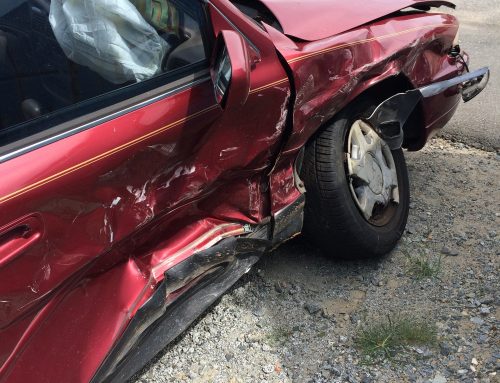Imagine you are traveling down I-75, doing the speed limit and minding your own business. Suddenly, the car in front of you slams on their brakes, giving you no time to react.
Rear end collisions are all too common. In fact, the National Transportation Safety Board reports that 28% of all car accidents are in this category; and a full 50% of two car accidents are rear end collisions. Unfortunately, these accidents are often not minor fender-benders. Sadly, they take the life of thousands of motorists each year.
Rear End Collisions – Who is at Fault?
While you may think the accident should be the lead driver’s fault for irresponsibly slamming on their brakes, in nearly 100% of cases the rear driver is determined to be at fault.
Every driver on the road is responsible for maintaining a safe distance between themselves and the car in front of them. A safe distance is defined as an adequate amount of room to safely stop your car, even without warning. This distance varies based upon your speed and the weather conditions at the time.
Staying a car length back when the speed limit is 30mph and the roads are dry is likely acceptable – while driving at 70 mph in the rain will require a significantly longer gap between vehicles to be considered safe.
Regardless of how unexpectedly the driver in front of you slams on their brakes, it is your responsibility to not hit them. In fact, the front driver is reacting to something in front of them as well. Rear end collisions are caused by rear driver inattentiveness, distracted driving, unsafe following speeds, or not paying attention to road conditions.
Rear End Collisions – Insurance Company Response
Florida is a no-fault state, meaning that each driver’s insurance company will pay for covered damages. Still, if the front driver’s damage or injuries exceed their coverage limits, they can sue the driver who hit them.
After every accident, you should remain on scene, swap insurance information, and wait to file an insurance report. Still, insurance professionals acknowledge that the rear driver’s insurance will pay the front driver’s injuries or expenses without question in these situations – every time.
While it is possible that the front driver was engaging in negligent or reckless behavior, it is very difficult to prove that the rear driver was still not at fault.
Can I Sue the Front Driver if I Rear End Them?
But what if the driver ahead of you did not have working brake lights? Or perhaps they were stopped in the road with no hazards or blinkers on?
If you were involved in a Tampa or Sarasota area car accident involving a rear end collision – and you were the rear driver – you may feel that you are entitled to sue the front driver for negligent driving. If you feel the circumstances are extenuating, be sure to speak to the police officers and obtain a copy of the police report.
Contact a personal injury lawyer who can help you to determine if there is valid cause for you to file a suit. Keep in mind, however, that there are rare circumstances which would see you win that case. Is there ever a case when the front driver is at fault? Probably, but it is hard to argue your own culpability away.
Still, it never hurts to speak to a local personal injury attorney if you have questions or feel you have a valid case. At Probinsky & Cole, we have decades of experience with personal injury claims, and can give you professional advice as to whether or not you should proceed. Call us today, we are happy to answer your questions.







